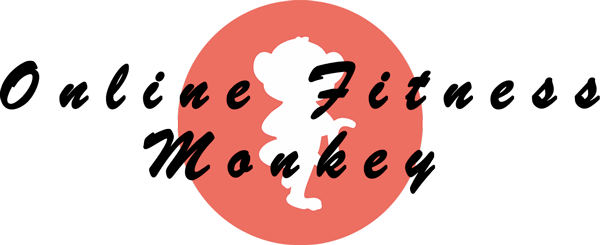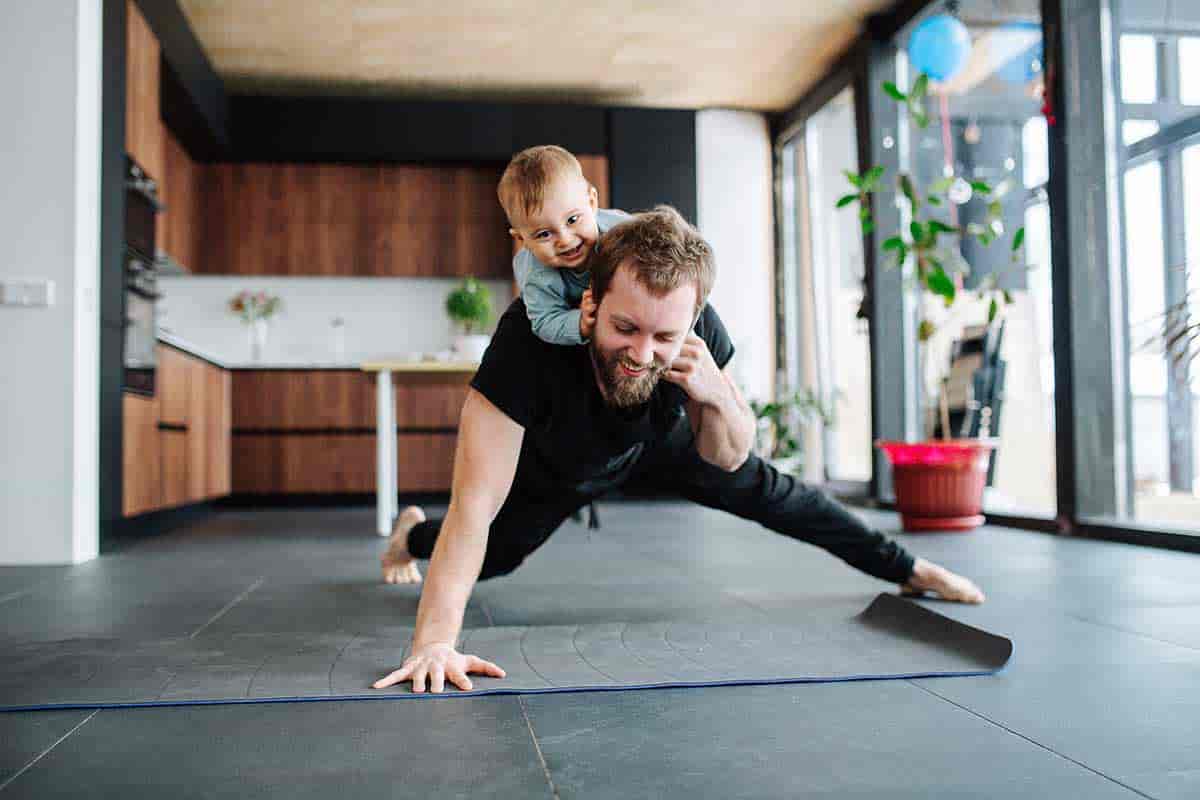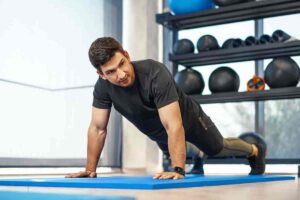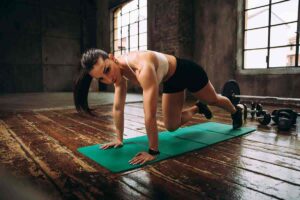What walks on three legs in the morning, two legs in the afternoon, and two legs at night? Actually, you probably had it right the first time — the answer is a human. But not just any human: one that eats healthy foods, rests plentifully and plays hard. Physical fitness is more than just playing catch, though, so how can you build muscle without shelling out for a gym membership?
The best exercises for building muscle at home are weighted exercises. These include bodyweight exercises such as push-ups and squats, which you can augment with extra weight using weighted vests or handstand push-ups. You can also perform exercises with weights like dumbbells and barbells.
If you are new to strength training, you will have more questions about muscle building and exercise options. Keep reading for an in-depth explanation of muscle growth and guidance on the 7 best exercises you can do at home to build muscle.
Article Contents
How Does Muscle Build in the Body?
The most important thing to understand about muscle growth is that your muscles are alive just as much as anything else in your body, with responses to sustaining damage that are unique to this type of tissue. For example, a sufficiently deep scratch may scar as your skin attempts to not only heal the wound but reinforce it against further damage to the same location.
In a similar fashion, muscle tissues respond to damage by growing stronger and building resilience against further damage. This is why strength training becomes increasingly difficult as you progress, rather than easier. Essentially, exercises that build muscle actually do so by carefully inflicting a very small, controlled amount of damage for your muscles to recover from.
On a molecular level, the muscle-building process looks something like this:
- First, you contract your muscles: Your muscles contract and expand using a unique kind of organic fiber that sticks to itself with a special mechanism not unlike Velcro. This is so that each muscle cell can expend less energy, but is also an underlying factor to muscles that remain stubbornly tense long after you finish your workout.
- Secondly, you relax your muscles: After releasing the tension from contracting, your muscles relax and some of those helpful, self-adhesive fibers unstick themselves. A few of them will lag behind the speed at which your muscles relax, which causes them to tear along with any nearby muscle cells.
- Thirdly, you do it again: You complete your last set and finish your workout for the day. At this point, your muscles have contracted, extended, and relaxed over and over again under varying degrees of duress, accumulating many microscopic rips and tears along the way.
- Finally, you rest: Your body will have already set itself to work repairing those microtears in your macular microfibers almost as soon as your first set is finished. Using the proteins sourced from your diet, your body will reattach and fortify broken muscle fibers so that they will be less likely to tear again later.
When your body rebuilds these fibers and cells, it also reinforces the areas that sustained damage to help avoid the need for reconstruction in the future. By building muscle fibers and cells thicker and more resilient to strain than they were before exercise, this phenomenon is what causes muscles to grow visibly larger as you strengthen them.
What's the Best Way to Ensure Muscle Is Building and Not Shrinking?
First and foremost, the best way to ensure that your muscles are building and not shrinking is to eat a balanced diet with enough protein. The composition of your muscles relies heavily on protein, and attempting to build muscle without an adequate supply of amino acids will actually cause your body to consume other muscles to compensate, making them shrink accordingly.
The next way to make sure that your muscles are protected from shrinkage is regular exercise. Your body only has so much space to work with, and it will compress cells from less used muscle to make space for other things like fat storage. Even if you have intense workout sessions, consistent physical activity is necessary to ensure that you do not lose the muscle you build.
The 7 Best Exercises to Do at Home to Build Muscle
Contrary to what commercial gyms might have you believe, your body does not require oversized tires or specialized equipment to build muscle. All you really need is a nutritious diet, plenty of rest, and of course, a range of simple yet effective movements that push the boundaries of your strength and endurance! A basic lifting set would probably help, though.
Push-ups
Outside of being the least favorite activity of every high school gym class, push-ups are an efficient way to strengthen your upper body without any extra gym equipment. You probably already even know the rules: hands slightly apart from your shoulders, hips in line with your shoulders, and legs up on your toes.
If you have equipment handy though, push-ups can also be easily modified to alter their difficulty. Consider wearing a weighted vest while you do push-ups to increase resistance, or putting your feet on a bench to elevate your lower body and force your arms to bear more of your weight.
Pull-ups
Perhaps the more effervescent cousin of push-ups, the pull-up is another familiar yet effective activity for strengthening the upper body. However, this does require access to a horizontal handheld of some sort, such as a dedicated pull-up bar, a money bar set, or even a sufficiently positioned tree branch that can bear your weight.
Augment this exercise by wearing a weighted vest or belt to increase resistance. You can also attempt to straighten your legs and slowly raise them at the hip for a boost to your usual core building. When you finally dominate this exercise, increase the difficulty again by adding ankle weights to the leg lifts.
Squats
This leg exercise is a classic, and for a good reason: this exercise works your leg from hips to ankles, as well as training the body in balance and posture. You can also make it harder by holding something heavy in your outstretched arms, such as a kettle weight or a moderately sized planter pot.
Weighted Arm Extensions
Though this exercise requires a weight, it can be used with either handheld dumbbells or wrist weights. Your starting position is seated with your feet in line with your shoulders and your back straight. Hold your weights so that your palms are facing upward, your elbows are by your sides, and begin by extending one arm straight outwards while rotating your palm towards the floor.
Retract that arm to your side, rotating your palm back upwards. Then maintain a square angle in your elbow and rotate your arm upwards so that your palm is facing behind you. Extend your arm and rotate your palm to face away from you, retract it again, and rotate your arm at the shoulder to the starting position. Repeat an equal number of times for each arm.
Knee Raises
Knee raises are a great exercise because they target your core, waist, and thighs all in one go. Standing in place, simply raise one knee until it is level with your hip and then return your foot to the floor. You can fold your leg at the knee or hold it at a square angle depending on how you want to distribute the strain. You can also wear ankle weights to increase the difficulty.
Calf Raises
This easy and effective exercise is a popular favorite due to the ease of performing it in a variety of locations. Keeping your legs and back straight, lift your heels as far off the ground as you can and then lower yourself back down to the floor. Since this exercise is an easy outlet for nervous jitters and other excess energy, remember that you should go down more slowly than you go up.
Leg Lifts
Another great exercise for adding weights, leg lifts can help build strength and coordination in your thighs as well as strengthen your lower back. You will need a place where you can comfortably lay on your side with your legs together, though. Once you have that, just lift one leg up as far as you can and slowly lower it again. Remember to keep your reps even for both legs!
A Great Online Resource to Learn How to Build Muscle
Chances are that you have found at least of few of these exercises are familiar. Of course, that is because they all but embody the idea of ‘tried and true’ methodology. So if you still find yourself feeling lost or frustrated with your workout, it is probably because you are missing a key component: that a list of exercises is not the same as an exercise routine.
The ideal workout program would combine the most effective exercises for your fitness goals with a repetition schedule tailored for efficiency, while also balancing development across all of your target muscle groups and incorporating an engaging variety of challenging physical activities. If this sounds a bit overwhelming, then it would be because people can get paid for it.
Unfortunately, not everyone has the time or money to invest in a personal health and fitness trainer. And thankfully, unless you plan on becoming a professional athlete, you probably will not need one to accomplish your fitness goals. You will, however, need a method of organizing your workout routine, which can be purchased from those same professional instructors.
Two of these professionals, Strength and Conditioning Specialists Greg Robins and Tony Bonvechio, founded The Strength House, a strength training center that offers online video fitness courses geared toward a wide range of fitness goals. And if you do decide to become a professional athlete, they have courses for that, too.
Outro
Good health requires good nutrition, good rest, and good exercise, and each is often easier said than done. Good exercise can be still be made accessible without sacrificing efficacy, and there are several versatile activities with plenty of room for growth and improvement that one can practice at home. As long as you exercise regularly, you will be able to wear, tear, and repair your muscles into becoming stronger and more resilient.
However, if you struggle to organize your workout routine or have become frustrated with the apparent impotence of your own training regimen, then consider seeking professional advice from certified fitness instructors. The easiest and most affordable approach to this is to take an online fitness course, like those offered by specialists at The Strength House, that provides a carefully constructed workout regimen suited to your fitness goals.




